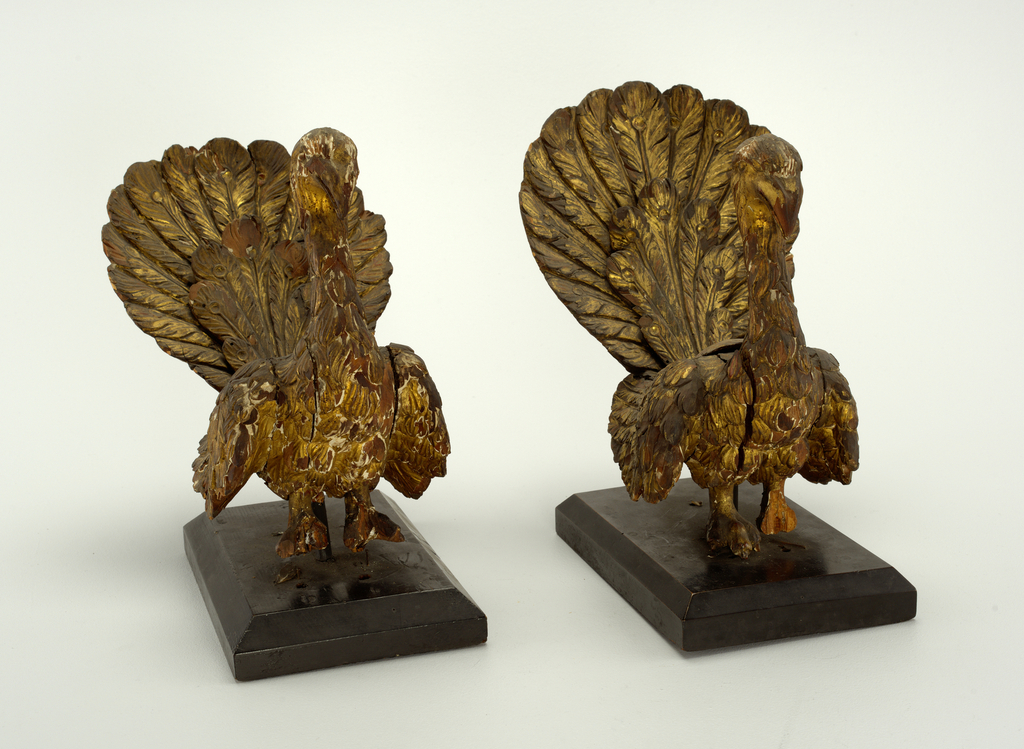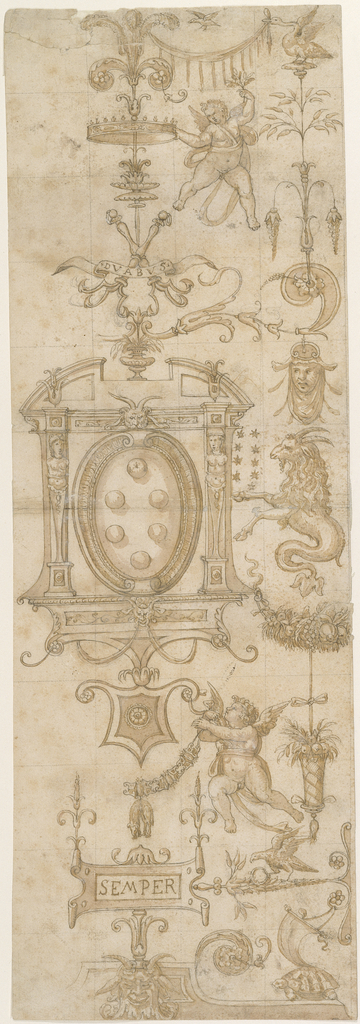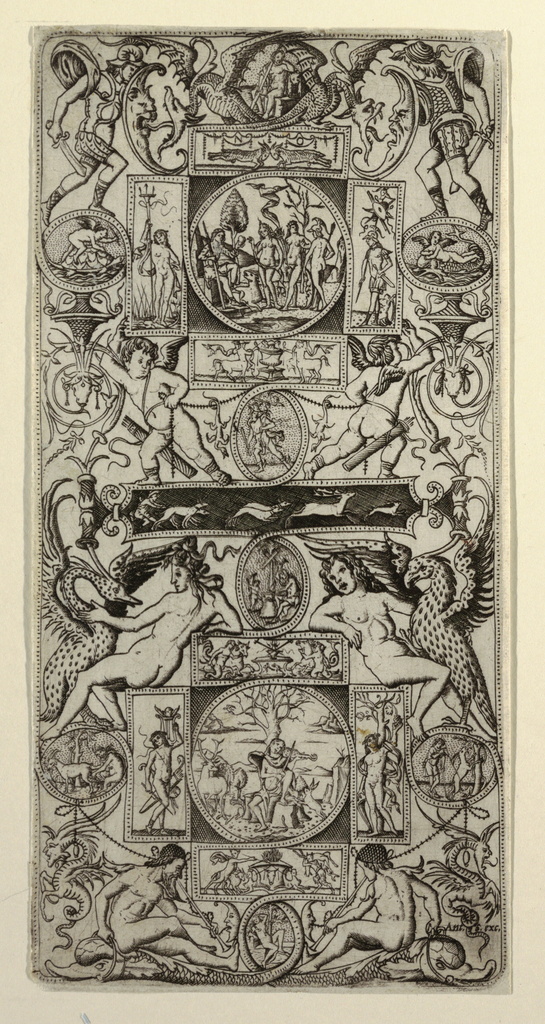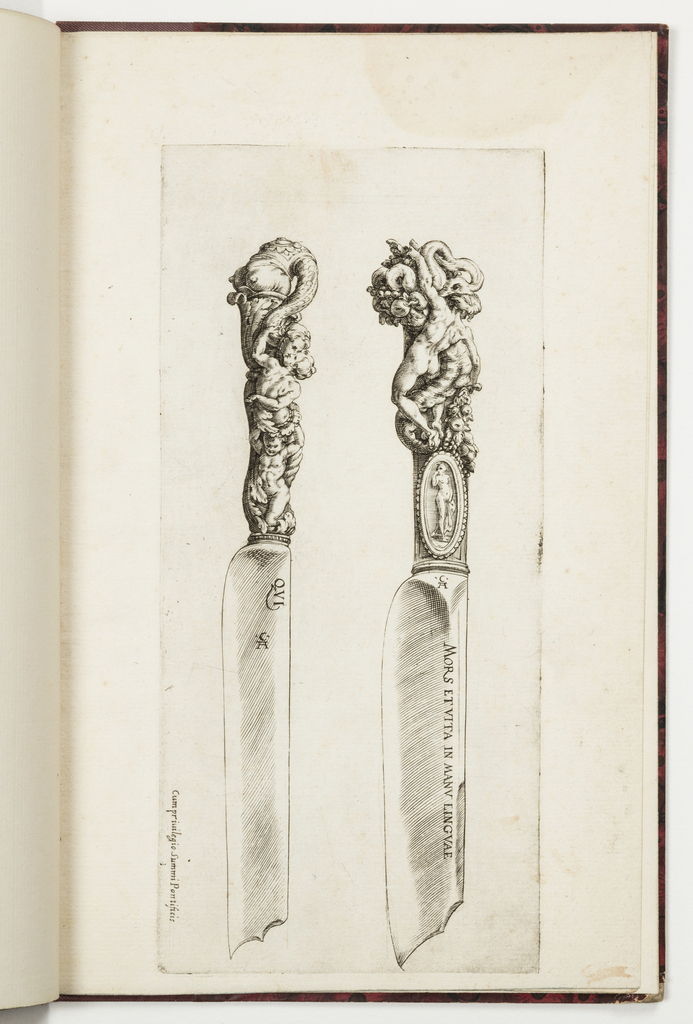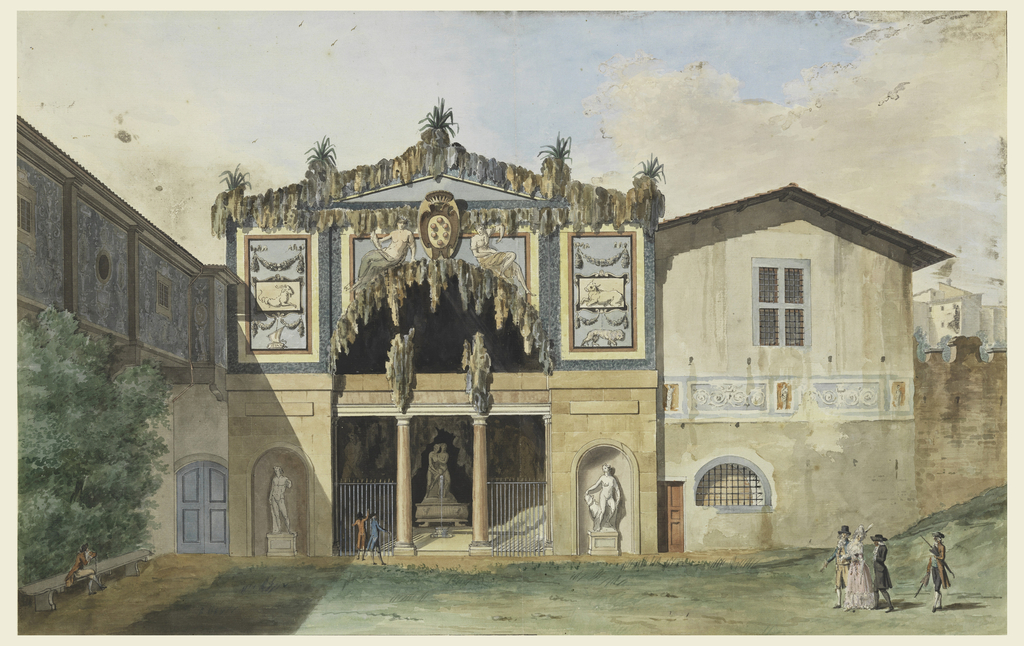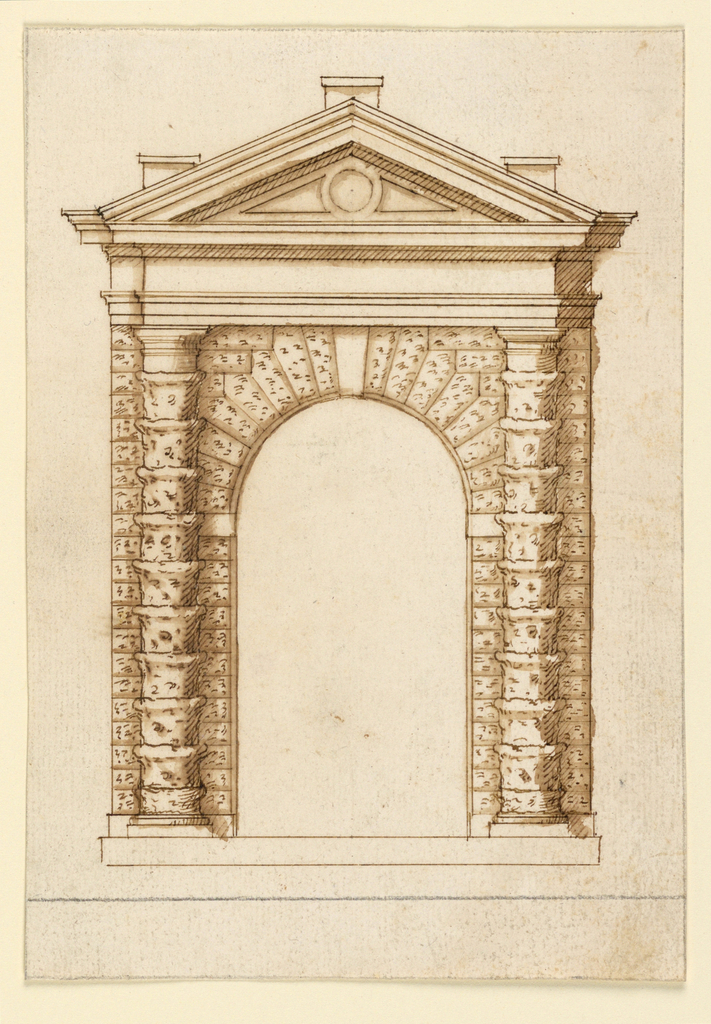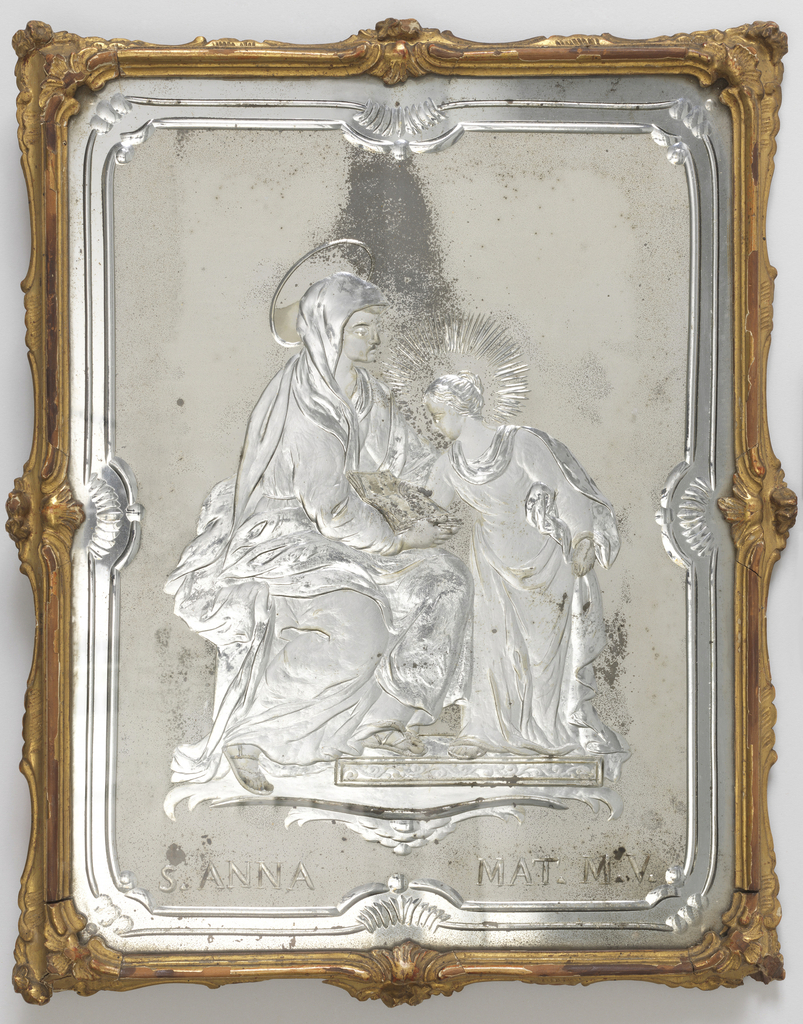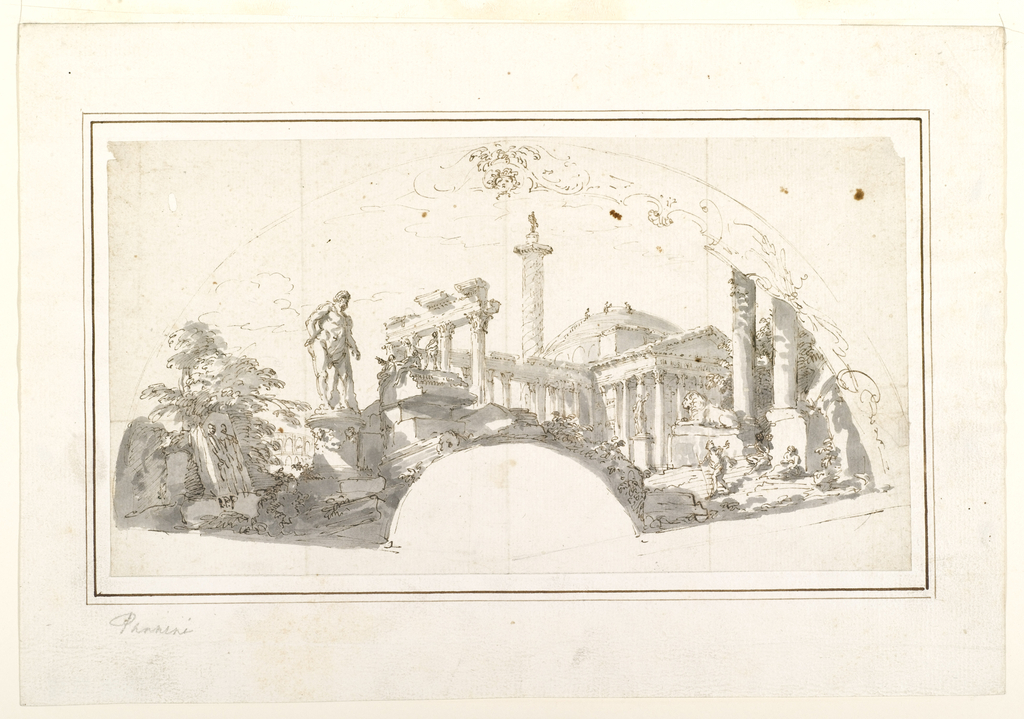“Can you help us in identifying where our birds were made?”[1] This inquiry is one of numerous others regarding two fowl from a 1968 letter from Catherine Lynn Frangiamore, then an assistant in the Department of Decorative Arts (now Product Design and Decorative Arts) at Cooper Hewitt, to Lino Sandonnini, then director of the Museo...
What do balls, goats, and turtles have in common? …They’re all symbols of a powerful man. In 1570, Cosimo I de’ Medici opened the Laurentian Library in Florence, realizing a decades-long project to house and promote his family’s vast collection of scholarly manuscripts.[1] This drawing shows a design for one of the library’s stained glass...
Some of the most common elements found in grotesque designs are pairs of contorted nudes known as ignudi (plural of ignudo). In many designs, figures assume postures that are variations or counterposes of their lateral mate’s. Like the grotesque motif itself, these compliant figures invite the artist to invent, exaggerate, and rearrange their parts into endless...
“Death and life are in the power of the tongue,” warns a proverbial inscription on a knife blade imagined by Francesco Salviati. Knife handles further illustrate the tongue’s pleasures and perils, and these sensuous yet violent scenes seem to caution diners about to indulge. On one handle, a figure risks a snakebite to reach into...
In the eighteenth century, many Italian artists produced views of popular tourist destinations to sell as souvenirs to travelers on the Grand Tour. This drawing by an unknown artist shows the Grotta Grande in the Boboli Gardens of Florence. Visible within the grotto’s chambers are Paris and Helena, sculpted in 1560 by Vincenzo di Rafaello...
Rusticated masonry was first used in the classical world. It is characterized by stones cut with a deliberately rough surface, and wide sunken joints between blocks. The Ancient Romans typically employed coarse stone in public structures such as city walls and aqueducts. However, during the reign of Emperor Claudius (41 – 54 C.E.), rusticated stonework...
This week’s entries are dedicated to objects featured in the exhibition Thom Browne Selects, currently on view at Cooper Hewitt through October 23, 2016. Venetian glass-making is not the only tradition observed in this engraved mirror, although engraved mirrors were popular there for both domestic and religious use in the seventeenth and eighteenth centuries. This...
From the eighteenth century, painted fans were one of the most popular souvenirs for any grand tourist visiting Italy. In this period, fans were part of the complex network of courtly behavior and aristocratic social codes, and they were also indispensable elements for coquetry. Such fans were made with a variety of materials such as...
Some of the most significant architects of our era have cited designer and architect Giovanni Battista Piranesi’s influence on their work. Learn how architects Peter Eisenman, Founder and Principal, Eisenman Architects; Michael Graves, Founder and Principal, Michael Graves & Associates; and Robert Venturi, Principal of Venturi, Scott Brown and Associates are inspired by Piranesi’s eclectic...
